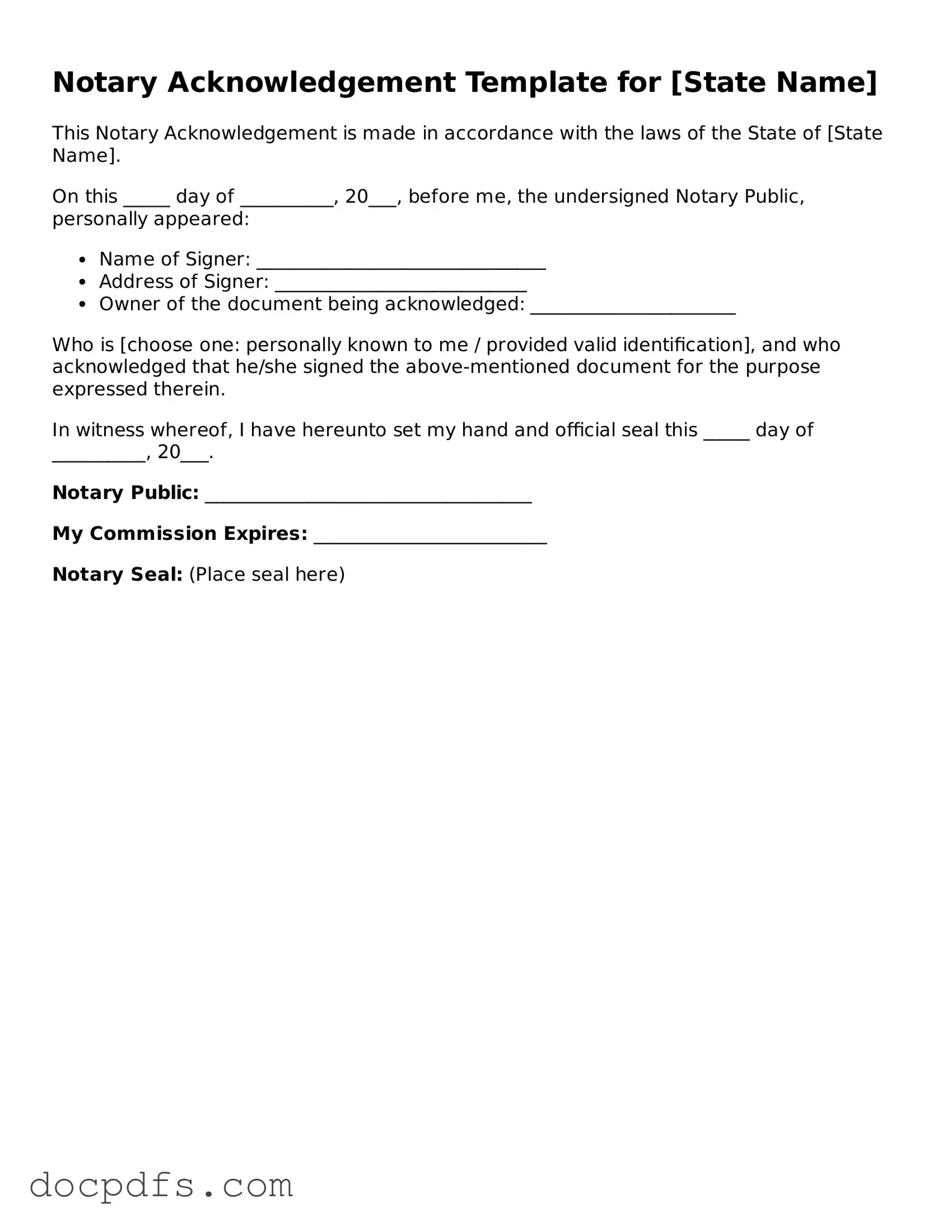The Notary Acknowledgment form plays a crucial role in the realm of legal documentation, serving as a formal declaration that a specific individual has willingly signed a document in the presence of a notary public. This form is essential for various legal processes, as it helps to verify the identity of the signer and confirms that they acted without duress or coercion. Typically, the form includes key elements such as the name of the signer, the date of the acknowledgment, and the notary's signature and seal. By providing a reliable method of identification, the Notary Acknowledgment enhances the integrity of documents like contracts, deeds, and affidavits. In many cases, the presence of a notary can also expedite the acceptance of documents by courts and other institutions, as it adds a layer of authenticity that is often required. Understanding the importance of this form can help individuals navigate legal processes with greater confidence and assurance.
